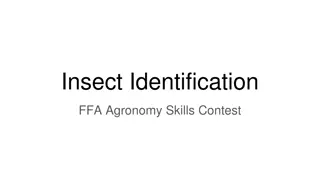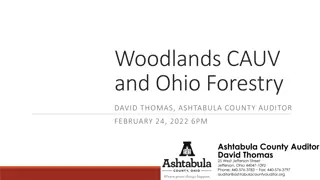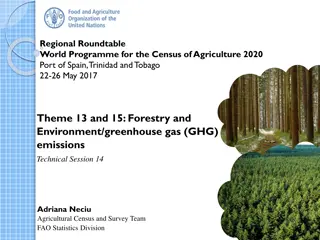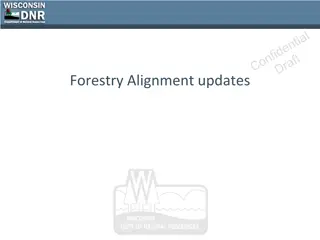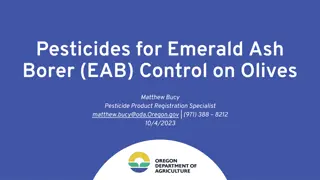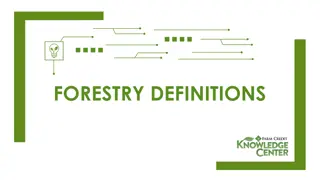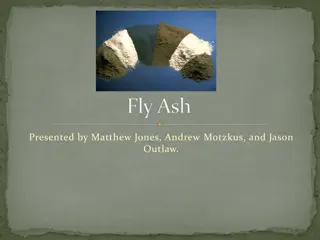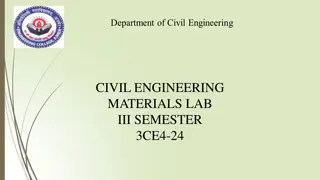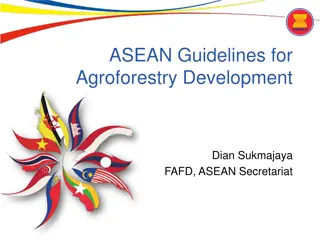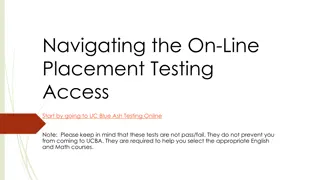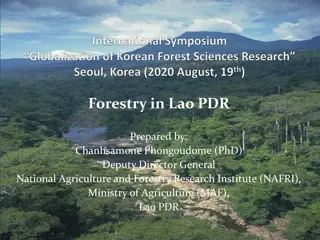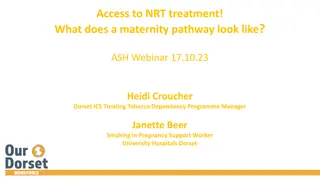Sustainable Forestry Conference Update: Emerald Ash Borer Management Insights
Explore the latest updates on forest health, particularly in managing the Emerald Ash Borer (EAB) infestation. Learn about detection, management strategies, replacement species, biocontrol, and the long-term fate of ash trees. Discover valuable insights shared by Linda Williams, a DNR Forest Health Specialist from Woodruff, Wisconsin.
Download Presentation

Please find below an Image/Link to download the presentation.
The content on the website is provided AS IS for your information and personal use only. It may not be sold, licensed, or shared on other websites without obtaining consent from the author.If you encounter any issues during the download, it is possible that the publisher has removed the file from their server.
You are allowed to download the files provided on this website for personal or commercial use, subject to the condition that they are used lawfully. All files are the property of their respective owners.
The content on the website is provided AS IS for your information and personal use only. It may not be sold, licensed, or shared on other websites without obtaining consent from the author.
E N D
Presentation Transcript
Forest Health Update Sustainable Forestry Conference April 2022 Linda Williams DNR Forest Health Specialist - Woodruff Linda.Williams@wisconsin.gov (920) 360-0665
Emerald Ash Borer Detections First identified in Michigan 20 years ago WI in 2008 Likely more widespread than is shown on the map. Still not very common in northern Wisconsin
Emerald Ash Borer Detections City & Township level EAB Detections Ash abundance in Wisconsin
Woodlot Ash Management We recommend that landowners manage for EAB now. Talk with a forester. Useful checklist for stand evaluation Many wet sites will not be accessible for a timber sale Stand regeneration not practical on many lowland sites.
Low sites may be lost Trees decline and die Water levels come up Invasive species invade
Lowland Ash Replacement Species List silver maple red maple river birch yellow birch paper birch swamp white oak bur oak American elm cottonwood quaking aspen hackberry basswood tamarack white cedar black spruce hemlock white pine bitternut hickory American sycamore Kentucky coffeetree
Oobius agrili EAB Biocontrol Tetrastichus planipennisi Spathius galinae
Whats the long-term fate of ash? In many places, ash regeneration from seeds and sprouts is present Regen can be infested when larger Ash may persist in the long term if it can stump sprout and/or produce seed before being killed by EAB Lingering Ash Ash genetics
Management of Ornamental Ash Trees Insecticides for treating high-value ornamental ash. UW Extension publications Infested and dead trees become dry and structurally weak. Safer and cheaper to remove early.
Lymantria dispar (formerly known as gypsy moth) Spongy Moth is the new common name. Populations rebounded in 2021 after nearly 10 years of low populations. Preferred hosts include oak, aspen, birch, willow, crabapple, and many more. Egg mass
Lymantria dispar Populations continue to rise in eastern counties Dry spring weather, minimal Entomophaga maimaiga. Trap catch map: pink is higher numbers Quarantine Counties
Spongy moth quarantine hauling logs Self-inspection is allowed. DATCP asks the following: Shipping out of the quarantine AND out of state need a USDA/APHIS compliance agreement. Shipping to the UP would not require an agreement since all of MI is quarantined. Shipping out of the quarantine BUT NOT out of state need a DATCP compliance agreement. Shipments should only go to mills/staging yards that have a current compliance agreement. Tim Allen maintains a list - Timothy.Allen@wisconsin.gov Workers that handle or ship logs can take online training (if they haven t already). The training is even on YouTube! Tinyurl.com/mothID
Forest Tent Caterpillar Native caterpillar w/periodic outbreaks Hosts: oak, aspen Last outbreak ended in 2000 next one maybe this year?
Oak Wilt Deadly disease of oaks caused by the fungus Bretziella fagacearum (formerly Ceratocystis fagacearum)
Oak Wilt Spreads in Two Ways Insect Transmission Overland High-risk is April-July in the Lake States Avoid wounding oaks Root graft transmission Through grafted roots Occurs throughout the growing season
Oak Wilt High Risk Periods Do not prune, wound, or harvest: April 15 July 15 (north) April 1 July 15 (south) Oak Wilt Guidelines were revised in 2016 When to require cutting restrictions during the high-risk period What situations can cutting be considered during the high-risk period
Oak Wilt Management Options Root severing Stump extraction Herbicide: chainsaw girdle Herbicide: stump treatment Rapid response To stop a pocket from expanding you must address the root system. Simply cutting the trees down will not work, and can make it spread faster
Rapid Response New infections only Trees are actively wilting and still have at least 50% leaves that have not dropped yet
Pilot Oak Wilt Suppression Program 24 sites treated Mix of traditional and rapid response, both girdle/herbicide and cut stump/herbicide Primarily on private lands Largest pocket was about 90 trees across multiple landowners
HRD Online Web Map Heterobasidion Root Disease Preventative stump treatment recommendations w/in 25 mi of known infection Stand is at least 50% pine/spruce Treat merchantable stumps Launched January 2019 Displays known disease locations Interactive Access via mobile or desktop Updates done when a significant new find occurs, or once a year
Watch for Spotted Lanternfly Asian insect first found in Pennsylvania in 2014. Sap feeder on many tree species. Prolific honeydew producer. Egg masses easy to move. Infestations in Indiana and Ohio in 2021.
Find more Forest Health information on the DNR Website






